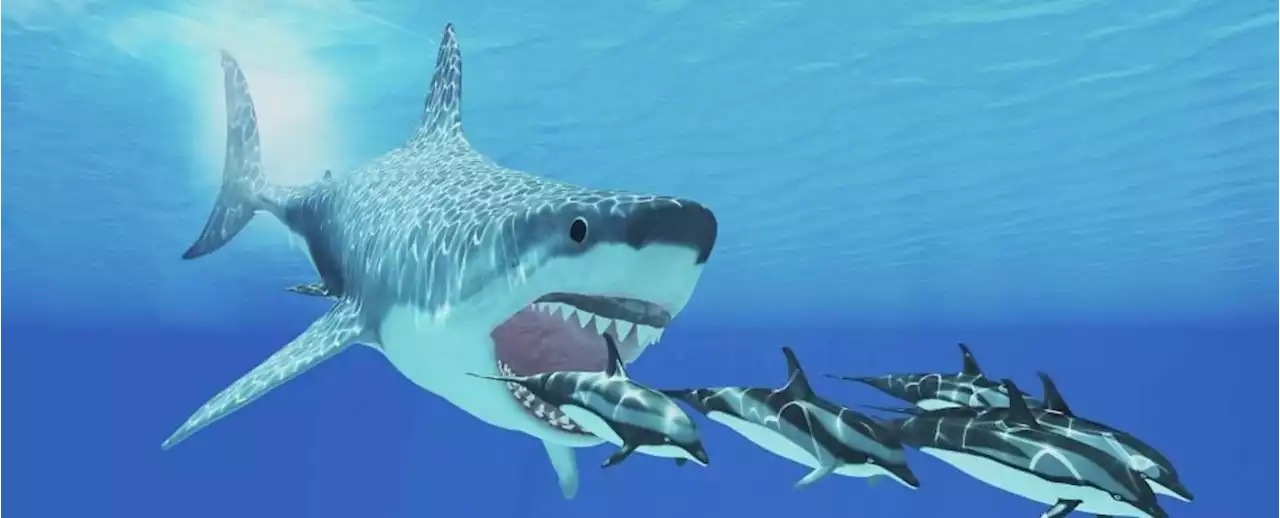Earth's oceans were once home to an absolutely fearsome predator.
These sharks are characterized by fast swimming speeds and partial warm-bloodedness, or regional endothermy – their venous blood is heated by their muscles. This keeps their swimming muscles and brains warm, and improves their metabolisms. They can swim faster, endure colder environments, and hunt and digest food more efficiently.
Megalodon did not belong to the Lamnidae family, but scientists believe it was closely related, an offshoot that diverged during the Cretaceous. It's thought that it, too, was partially warm-blooded, which would have given the ancient monster the same advantages as its modern relatives. This would put megalodon in the orderBecause of this close relationship, scientists usually turn to lamnid sharks to try to work out what megalodon looked like.
They compared heads, fins, tails and bodies, and ultimately found no patterns that distinguish lamnid sharks."I encourage others to explore ideas about its body shape, and to search for the ultimate treasure of a preserved megalodon fossil. Meanwhile, this result clears up some confusion about previous findings and opens the door to other ideas once again."
It's back to the drawing board for megalodon – quite literally, really. Figuring out the shape of the shadow that bore down on its hapless prey for 20 million years is going to require a new approach. But that opens up exciting new possibilities. "The study may appear to be a step backward in science, but the continued mystery makes paleontology, the study of prehistoric life, a fascinating and exciting scientific field,"
United States Latest News, United States Headlines
Similar News:You can also read news stories similar to this one that we have collected from other news sources.
 Best New Ideas in Money: Data and Goliath on Apple PodcastsCollecting personal data is a big business for many companies. Should you be getting a cut? 🎧Listen on ApplePodcasts:
Best New Ideas in Money: Data and Goliath on Apple PodcastsCollecting personal data is a big business for many companies. Should you be getting a cut? 🎧Listen on ApplePodcasts:
Read more »
 There Are About 73,000 Tree Species on Earth, New Study Shows | Sci-News.comNew research indicates that there are 73,274 tree species globally, among which about 9,200 tree species are yet to be discovered.
There Are About 73,000 Tree Species on Earth, New Study Shows | Sci-News.comNew research indicates that there are 73,274 tree species globally, among which about 9,200 tree species are yet to be discovered.
Read more »
 Hippos Use Vocal Recognition to Manage Inter-Group Relationships: Study | Sci-News.comA new study shows that the hippopotamus (Hippopotamus amphibius), an iconic African megaherbivore for which little is known about social communication, uses vocal recognition to manage relationships between territorial groups.
Hippos Use Vocal Recognition to Manage Inter-Group Relationships: Study | Sci-News.comA new study shows that the hippopotamus (Hippopotamus amphibius), an iconic African megaherbivore for which little is known about social communication, uses vocal recognition to manage relationships between territorial groups.
Read more »
 COVID-19: A study of studies shows lockdowns should be locked out | MulshineNew Jersey Governor Phil Murphy called people 'knuckleheads' for failing to follow his many mandatory orders on COVID-19, but a new study from prestigious Johns Hopkins University shows lockdown orders didn't work
COVID-19: A study of studies shows lockdowns should be locked out | MulshineNew Jersey Governor Phil Murphy called people 'knuckleheads' for failing to follow his many mandatory orders on COVID-19, but a new study from prestigious Johns Hopkins University shows lockdown orders didn't work
Read more »
 New Findings Show Dietary Supplement May Mimic the Benefits of ExerciseA recent study shows the benefits of selenium supplements on brain health.
New Findings Show Dietary Supplement May Mimic the Benefits of ExerciseA recent study shows the benefits of selenium supplements on brain health.
Read more »
